

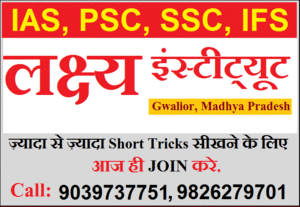
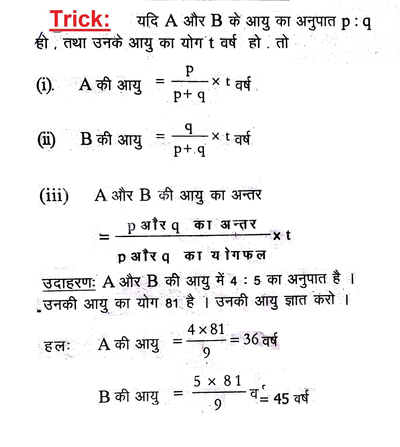
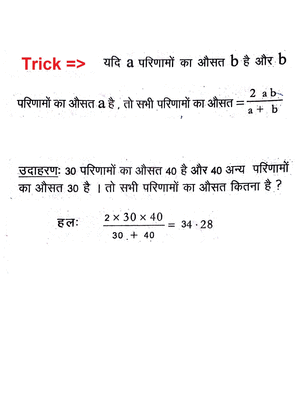
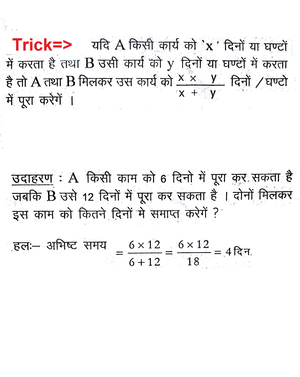

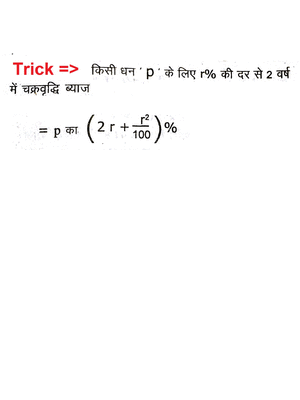
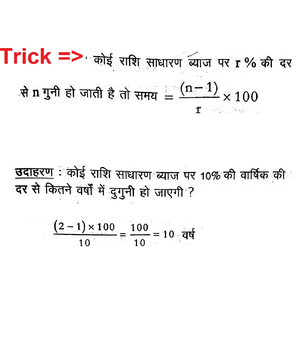

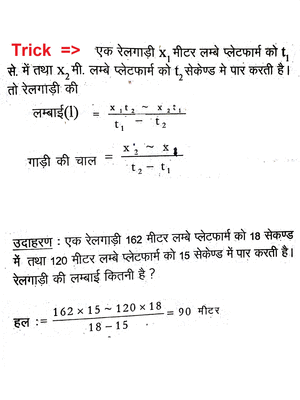






|
Multiply Up to 20X20 In Your Mind : With this trick, you will be able to multiply any two numbers from 11 to 19 in your head quickly, without the use of a calculator. I will assume that you know your multiplication table reasonably well up to 10x10. Try this: · Take 15 x 13 for an example. · Always place the larger number of the two on top in your mind. · Then draw the shape of Africa mentally so it covers the 15 and the 3 from the 13 below. Those covered numbers are all you need. · First add 15 + 3 = 18 · Add a zero behind it (multiply by 10) to get 180. · Multiply the covered lower 3 x the single digit above it the "5" (3x5= 15) · Add 180 + 15 = 195. That is It! Wasn't that easy? Practice it on paper first! |
|
Multiply By 9 |
|
Multiply By 11 You likely all know the 10 rule (to multiply by 10, just add a 0 behind the number) but do you know the 11 rule? It is as easy! You should be able to do this one in you head for any two digit number. Practice it on paper first! To multiply any two digit number by 11: · For this example we will use 54. · Separate the two digits in you mind (5__4). · Notice the hole between them! · Add the 5 and the 4 together (5+4=9) · Put the resulting 9 in the hole 594. That's it! 11 x 54=594 The only thing tricky to remember is that if the result of the addition is greater than 9, you only put the "ones" digit in the hole and carry the "tens" digit from the addition. For example 11 x 57 ... 5__7 ... 5+7=12 ... put the 2 in the hole and add the 1 from the 12 to the 5 in to get 6 for a result of 627 ... 11 x 57 = 627 |
|
Multiply By 4 |
Multiply By 5To quickly multiply by 5, divide the number in two and then multiply it by 10. Often this can be done quickly in your head. |
The 11 Rule ExpandedYou can directly write down the answer to any number multiplied by 11. · Take for example the number 51236 X 11. · First, write down the number with a zero in front of it. · 051236 · The zero is necessary so that the rules are simpler. · Draw a line under the number. · Bear with me on this one. It is simple if you work through it slowly. To do this, all you have to do this is "Add the neighbor". Look at the 6 in the "units" position of the number. Since there is no number to the right of it, you can't add to its "neighbor" so just write down 6 below the 6 in the units col. · For the "tens" place, add the 3 to the its "neighbor" (the 6). Write the answer: 9 below the 3. · For the "hundreds" place, add the 2 to the its "neighbor" (the 3). Write the answer: 5 below the 2. · For the "thousands" place, add the 1 to the its "neighbor" (the 2). Write the answer: 3 below the 1. · For the "ten-thousands" place, add the 5 to the its "neighbor" (the 1). Write the answer: 6 below the 5. · For the "hundred-thousands" place, add the 0 to the its "neighbor" (the 5). Write the answer: 5 below the 0.That's it ... 11 X 051236 = 563596 |
Square 2 Digit NumberSquare a 2 Digit Number, for this example 37: · Look for the nearest 10 boundary · In this case up 3 from 37 to 40. · Since you went UP 3 to 40 go DOWN 3 from 37 to 34. · Now mentally multiply 34x40 · The way I do it is 34x10=340; · Double it mentally to 680 · Double it again mentally to 1360 · This 1360 is the FIRST interim answer. · 37 is "3" away from the 10 boundary 40. · Square this "3" distance from 10 boundary. · 3x3=9 which is the SECOND interim answer. · Add the two interim answers to get the final answer. · Answer: 1360 + 9 = 1369 |
Square a 2 Digit Number Ending in 5
· Take the "tens" part of the number (the 2 and add 1)=3 · Multiply the original "tens" part of the number by the new number (2x3) · Take the result (2x3=6) and put 25 behind it. Result the answer 625. Try a few more 75 squared ... = 7x8=56 ... put 25 behind it is 5625. |
|
Calculate a Tip If you need to leave a 15% tip, here is the easy way to do it. Work out 10% (divide the number by 10) – then add that number to half its value and you have your answer: 15% of $25 = (10% of 25) + ((10% of 25) / 2) $2.50 + $1.25 = $3.75 |
|
Tough Multiplication If you have a large number to multiply and one of the numbers is even, you can easily subdivide to get to the answer: 32 x 125, is the same as: |
|
Percentages Find 7 % of 300. Sound Difficult? Percents: First of all you need to understand the word “Percent.” The first part is PER , as in 10 tricks per listverse page. PER = FOR EACH. The second part of the word is CENT, as in 100. Like Century = 100 years. 100 CENTS in 1 dollar… etc. Ok… so PERCENT = For Each 100. So, it follows that 7 PERCENT of 100, is 7. (7 for each hundred, of only 1 hundred). Back to the 7% of 300 question. 7% of the first hundred is 7. 7% of 2nd hundred is also 7, and yep, 7% of the 3rd hundred is also 7. So 7+7+7 = 21. If 8 % of 100 is 8, it follows that 8% of 50 is half of 8 , or 4. Break down every number that’s asked into questions of 100, if the number is less then 100, then move the decimal point accordingly. EXAMPLES: Also it’s usefull to know that you can always flip percents, like 3% of 100 is the same as 100% of 3. |
|
Assorted Multiplication Rules : Multiply by 5: Multiply by 10 and divide by 2. |
|
LCM & HCF (1) The Product of any 2 no. = Product of Their LCM and HCF (2) If two or more than two numbers are multiple of any no. than Least no. will be HCF (3) The HCF of prime number is always = 1 |
|
Mathematics tricks |
|
|
||||||||||||
|
For competitive exams |
|
|
|
For Job Interviews |
|
|
|
Topic: Age Related Problems |
|
|
|
|
|
Topic : Average |
|
|
|
Topic : Train Related Problems |
|
|
|
|
|
Topic : Ratio |
|
|
|
Topic : Time & Work |
|
|
|
Topic : Percentage |
|
|
|
Topic : Simple Interest |
|
|
|
|
|
Topic : Compund Interest |
|
|
|
More Tricks For Competitive Exam (IAS, PSC, Bank, LIC, RBI, IBPS, any National / State Level Exams) If You want More Maths Short Tricks, You Can Buy it from E4education.in Charges: 150 Rs/- For one Topic. 3000 Rs /- For All Maths Tricks. |